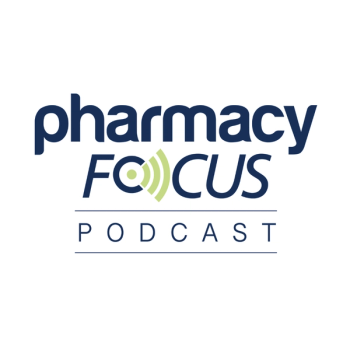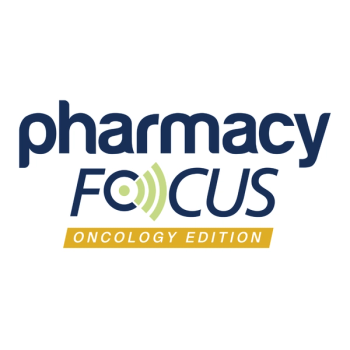
Aumolertinib and Osimertinib Demonstrate Comparable Outcomes in EGFR-Mutated NSCLC
Key Takeaways
- Aumolertinib and osimertinib show comparable efficacy and safety in treating EGFR-mutant NSCLC, offering a potential alternative therapeutic option.
- Aumolertinib is a third-generation EGFR TKI recommended as a first-line treatment in China for NSCLC with EGFR-sensitive mutations.
Aumolertinib and osimertinib show similar efficacy and safety when treating patients with EGFR-mutant non–small cell lung cancer (NSCLC), providing valuable insights for treatment optimization.
Aumolertinib and osimertinib (Tagrisso; AstraZeneca) demonstrate comparable efficacy and safety profiles when treating EGFR-mutant non–small cell lung cancer (NSCLC), according to authors of a study published in Discover Oncology. These findings are significant, the authors wrote, because health care professionals now have a reference path to optimize aumolertinib as a possible therapeutic option in the treatment of NSCLC.1
Aumolertinib (formerly almonertinib) is a domestically developed third-generation EGFR tyrosine kinase inhibitor (TKI) that was approved for clinical use in China in March 2020. The 2020 edition of the Chinese Society of Clinical Oncology guidelines further recommended aumolertinib as a first-line treatment option for patients with NSCLC with EGFR-sensitive mutations.1
Previously, osimertinib has demonstrated its benefits in helping patients with EGFR-mutated NSCLC achieve statistically significant and clinically meaningful improvements in outcomes, particularly when administered alongside chemotherapy. A recent phase 3 clinical trial, FLAURA2 (NCT04035486), showed that osimertinib with chemotherapy had led to consistent benefits across prespecified postprogression end points of time to first subsequent treatment (HR, 0.73; 95% CI 0.56-0.94), time to progression on second-line therapy (HR, 0.70; 95% CI 0.52-0.93), and time to second subsequent treatment (HR, 0.69; 95% CI 0.51-0.93) compared with osimertinib monotherapy. These benefits were consistent across prespecified subgroups (eg, sex, race, type of EGFR mutation) at baseline.2,3
The authors wrote that although both aumolertinib and osimertinib have demonstrated excellent results in the treatment of NSCLC, there are no comprehensive studies that systematically compare the efficacy, safety, and cost-effectiveness of these 2 agents head-to-head.1
This retrospective analysis was performed on patients with EGFR-mutant advanced NSCLC who were admitted to the First People’s Hospital of Yunnan Province from April 2020 to June 2023. Their gender, age, smoking history, clinical tumor stage, Eastern Cooperative Oncology Group Performance Status, metastases number, brain metastases, and EGFR mutation type were also observed.1
The primary outcome was median progression-free survival (PFS), and secondary outcomes included overall survival (OS), disease control rate (DCR), and objective response rate (ORR). Frequency of adverse events (AEs) was also assessed.1
A total of 202 patients were included in the trial, of which 106 were assigned to receive aumolertinib and the remaining 96 received osimertinib. In the first-line treatment, there was no significant difference observed in median PFS between the 2 treatment groups (19.0 months; HR, 1.15 [95% CI, 0.70-1.91]; P = .58). Additionally, the DCR (95.7% vs 89.8%), ORR (39.1% vs 30.6%), and median OS (27.0 vs 38.0 months) were comparable between the 2 respective groups, with no observed statistical significance in these outcomes. In the second-line treatment, aumolertinib and osimertinib demonstrated similar median PFS (13.5 vs 13.0 months; HR, 1.13 [95% CI, 0.75-1.71]; P = .55), DCR (90.0% vs 87.2%), ORR (16.7% vs 17.0%), and median OS (24.0 vs 20.0 months).1
Grades 1 and 2 AEs were also similar between the aimolertinib and osimertinib groups, of which the most common were rash (44.34% vs 48.96%), mouth ulceration (18.87% vs 30.21%), nausea (17.92% vs 15.63%), and diarrhea (16.98% vs 21.88%). There were 2 observed cases of grade 3 or 4 paronychia and 2 cases of inflammatory lung injury in the osimertinib group, whereas no such events occurred in the aumolertinib group. The incidence of other types of AEs was similar between the 2 groups.1
“In conclusion, this study provided the direct comparative analysis of aumolertinib and osimertinib in the treatment of EGFR-mutant NSCLC patients, demonstrating comparable efficacy and safety between the 2 agents. These findings offer valuable clinical evidence to support treatment selection in patients with advanced EGFR-mutant NSCLC. However, prospective randomized controlled trials are needed to further explore potential efficacy differences across patient subgroups and optimize personalized EGFR-TKI therapy strategies,” concluded the study authors.1
REFERENCES
1. Yang SX, Zhu JD, Ma L, et al. Clinical study of aumolertinib versus osimertinib in the treatment of EGFR-mutated advanced non-small cell lung cancer. Discov Onc. 16, 1818 (2025). doi:10.1007/s12672-025-03642-5
2. McGovern G. Osimertinib with chemotherapy improves OS in patients with EGFRm NSCLC. Pharmacy Times. July 28, 2025. Accessed October 8, 2025. https://www.pharmacytimes.com/view/osimertinib-with-chemotherapy-improves-os-in-patients-with-egfrm-nsclc
3. A study of osimertinib with or without chemotherapy as 1st Line treatment in patients with mutated epidermal growth factor receptor non-small cell lung cancer (FLAURA2) (FLAURA2). ClinicalTrials.gov identifier: NCT04035486. Updated July 4, 2025. Accessed October 8, 2025. https://clinicaltrials.gov/study/NCT04035486
Newsletter
Stay informed on drug updates, treatment guidelines, and pharmacy practice trends—subscribe to Pharmacy Times for weekly clinical insights.
























































































































































































































